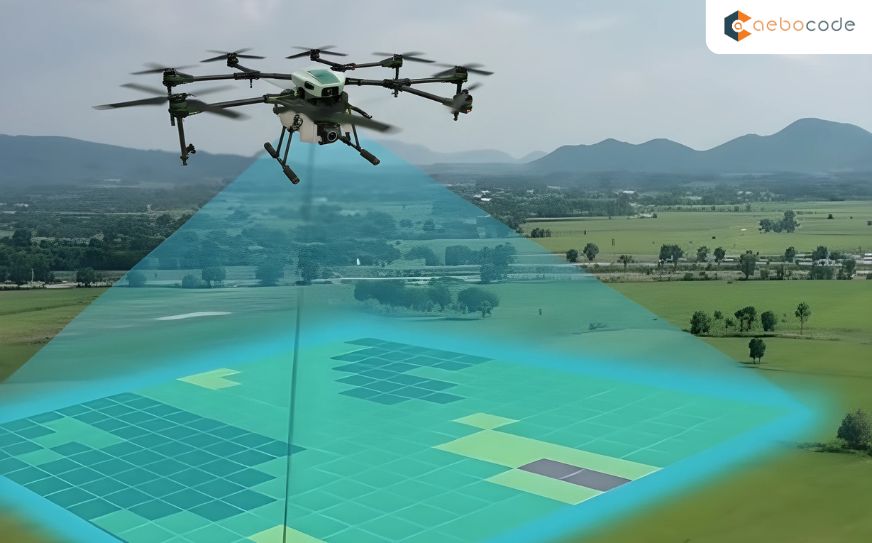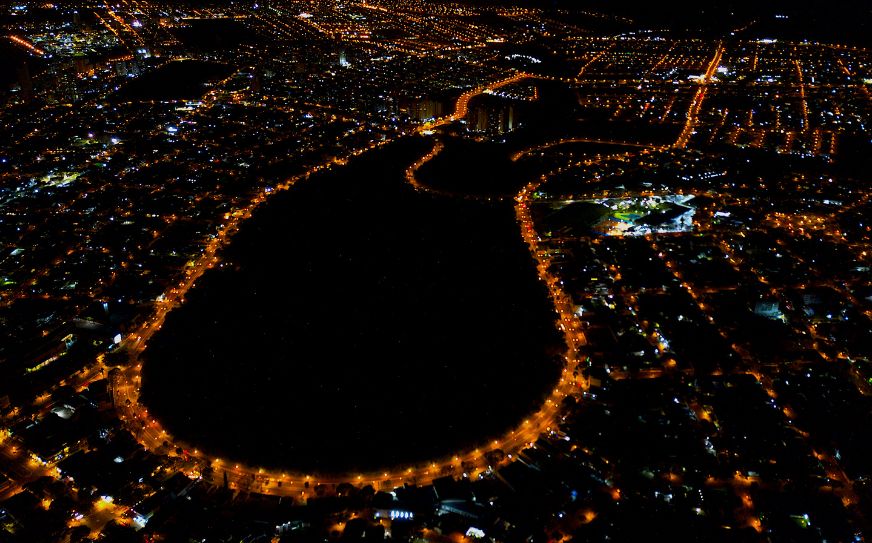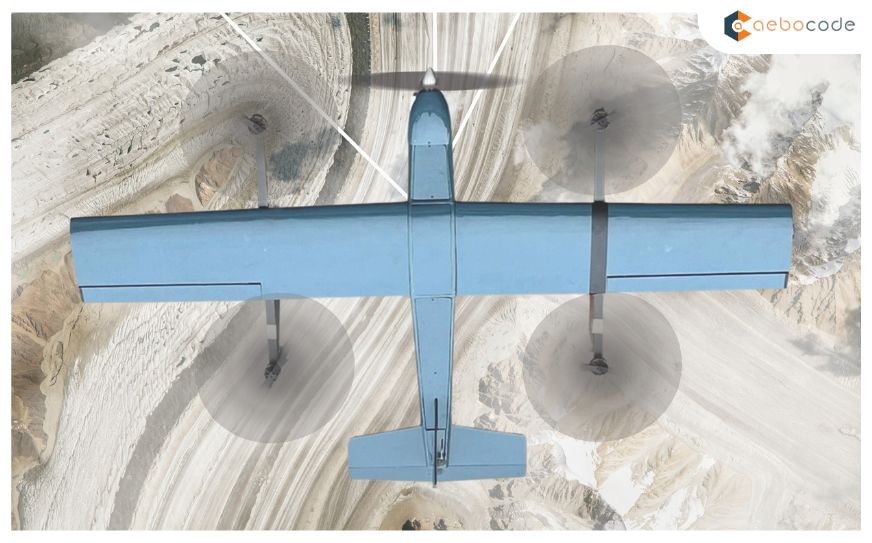
Thermal Imaging Drones: Night Surveillance for the Armed Forces
August 27, 2025
Mapping Drone Manufacturers: Guide to Airframes, Sensors and Mission Planning
September 24, 2025Made in India Drone Industries — An Industry Guide
Over the last decade, India has transitioned from being a niche consumer of drones to emerging as an increasingly proficient manufacturer of drones. Initially, the country relied heavily on imported drones, but gradually, domestic expertise and innovation have strengthened. As a result, India now boasts a growing drone manufacturing sector with significant technological capabilities.It is a blend of shifts in the policies of government, expansion of private investment, and increasing numbers of qualified engineers and component vendors that has led to the point where local unmanned aerial systems (UAS) are being conceived, produced, tested and used in civilian, commercial, and defence applications. This article sets out the status of “Made in India” drone production — what is driving it, how businesses are preparing, what capability is in development, regulatory and supply-chain concerns, typical delays, and the potential ahead.
Why “Made in India” matter to drones
Domestic production of drones has several advantages:
Moreover, local production promotes strategic independence by reducing dependency on off-shore sources for major platforms and components. This is especially important in defense and strategic infrastructure surveillance, where self-reliance enhances security and operational efficiency.
Cost & speed: Local manufacturing has the potential to reduce lead times and costs of customizations, maintenance and spares.
Creation of jobs & expertise: Design-to-manufacturing pipelines establish local electronics, engineering, and test capacity.
Export potential: Indian producers with competitive pricing can cater to emerging markets in Africa, Southeast Asia and Latin America at affordable prices.
Also read : The Rise of Kamikaze Drones
The categories of drone manufacturers in India
The domestic industry is a range of participants, each catering to multiple niches:
Small product innovators and startups
Usually cater to lightweight quadrotors, ag spray drones, photo/video rigs, and delivery models.
Strengths: agility, fast iteration, innovative use cases.
Examples of activities: sensor integration, flight-stack software, custom payloads.
Mid-sized systems integrators
Develop turnkey solutions for business customers (inspection, mapping, surveillance).
Strengths: camera integration, LiDAR, RTK GPS, and proprietary analytics platforms.
Characteristically deliver end-to-end solutions: hardware + software + training.
Defense-grade OEMs and Tier-1 vendors
Tactical UAS, long-endurance fixed-wing, and hardened platform expertise.
Strengths: reliability engineering, military certifications, integration of complex sensors and comms.
Component vendors and subcontractors
Make electronics, motors, propellers, battery packs, autopilot boards and communications modules.
Critical to developing an indigenous supply chain and minimizing imports.
Also read : FPV Drone Kits
Core competence in development
Indian manufacturers are investing in various technical domains:
Flight control and autopilots: Open-source stacks (PX4, ArduPilot) are typically adopted, and some companies are developing proprietary control firmware for more advanced autonomy.
Payload integration: RGB cameras, farming multispectral sensors, thermal imaging for inspection/rescue applications, small LiDAR modules for mapping.
Power systems: More energy-density packs, optimized motor/propeller design for extended endurance, battery management.
Communications: Encrypted telemetry, beyond-visual-line-of-sight (BVLOS) solutions over LTE/5G integration, secure RF links.
Mission software: Domain-specific analytics (crop health, asset inspection), fleet management, route planning, ground control stations.
Regulatory and policy environment
Indian drone ecosystems have been significantly driven by government policy. Major drivers of manufacturing are:
Relaxed, scalable rules: There has been incremental progress towards more acute registration, remote pilot license, and BVLOS trials—enablers to commercial adoption.
Production incentives & Make in India: Government incentive schemes encouraging indigenous production and R&D encourage makers to establish indigenous infrastructure.
Type approval and QA: Defence and select civilian applications require regulatory approvals and safety clearances, thereby making it more difficult for the manufacturer but more trust-inspiring.
Also read : Defense Drone Manufacturers
Supply-chain realities
Though the Indian manufacturing ecosystem for drones is ramping up, various supply-chain realities continue to be present:
Dependence on electronics: IMUs, high-precision sensors, and certain RF components are likely to be imported, driving cost and lead times higher.
Battery supply base: Lithium cells are available from overseas in high density; local battery assembly and BMS design are emerging but not yet fully established.
Precision machining & composites: Local capacities exist, though higher-composite airframes and light-machined components might require specialist suppliers.
Software skills: There is a good local software skill base, and this is a competitive strength for AI and autonomy development.
Certification complexity: Exceeding one’s way to satisfy military procurement regulations, export controls, and civil aviation clearances is costly and time-consuming.
Scale & margins: Most companies are low-volume; batching to larger sizes in order to keep unit costs low is an ongoing challenge.
R&D investment: Deep horizon investments necessary for sophisticated autonomy, computer vision and long-endurance power systems are hard for startups to finance.
After-sales & maintenance: It is crucial to establish an efficient service network in order to attain enterprise adoption but entails logistics capability and spare part inventory.
Opportunities and growth areas
Agritech & precision farming: India’s gigantic agriculture sector presents gigantic demand for crop monitoring, spraying and data analysis.
Infrastructure inspection: Power transmission, railroads, telecommunications towers and pipelines are repeat commercial applications of UAS.
Disaster relief & public safety: Public-value missions include thermal search, rapid mapping and payload delivery of medical aid.
Last-mile logistics in rough terrain: Pilot initiatives in rural area health-care provision can establish Indian solutions in local economies.
Export to comparable markets
Low-cost platforms for tropical and low-infrastructure ecosystems can be exported to other developing nations.
Best design and manufacturing practices
For long-term success by manufacturers:
Modular design: Create generic airframe and avionics modules to minimize development time and facilitate quick customization.
Manufacture parts locally: Indigenize batteries, ESCs (electronic speed controllers), propellers and frames to lower costs and reduce dependences.
Invest in test laboratories: Flight test labs, anechoic rooms for RF testing, and environmental stress testing accelerate certification.
Emphasize lifecycle support: Warranty, repair depots, and pilot training turn one-time buyers into repeat customers.
FAQs on Made in India Drone Manufacturing
1. Why is local drone manufacturing important for India?
Local drone manufacturing plays a critical role in building self-reliance and technological independence.
- It minimizes dependency on imports, which is vital for national security, especially for defense drones.
- Encourages job creation in engineering, assembly, and maintenance roles across the country.
- Supports cost-effective production by eliminating high import duties and transportation costs.
- Strengthens India’s position as a global supplier for affordable and efficient drone solutions.
With the “Make in India” initiative, the country is actively promoting homegrown drone startups and manufacturers to boost domestic innovation.
2. How does the government support drone manufacturing in India?
The Indian government has introduced several policies and incentives to strengthen the drone ecosystem:
- Liberalized Drone Rules 2021: Simplified drone registration and operational guidelines.
- Production Linked Incentive (PLI) Scheme: Financial incentives for manufacturers who invest in R&D and production facilities.
- Defence Procurement Policy: Preference given to indigenous products for defense and surveillance contracts.
- Establishment of drone testing facilities and air corridors to encourage research and commercial applications.
These measures aim to create a supportive ecosystem for manufacturers and innovators.
3. Which industries are driving drone demand in India?
Drones have a wide range of applications across various industries, creating a diverse demand base:
- Agriculture: For crop spraying, pest control, yield assessment, and precision farming.
- Infrastructure & Construction: Surveying land, monitoring progress, and inspecting bridges and towers.
- Defense & Security: Surveillance, border patrol, reconnaissance missions, and combat support.
- Healthcare: Delivery of vaccines, medicines, and essential supplies to remote areas.
- Disaster Management: Aiding rescue operations and delivering relief materials in flood or earthquake-hit regions.
- Logistics & E-commerce: Pilot projects for last-mile drone delivery.
The versatility of drones makes them a future-proof technology across multiple sectors.
4. What challenges do Indian drone manufacturers currently face?
While the industry is growing, manufacturers face several critical challenges:
- Dependence on Imported Components: Many high-precision sensors, GPS systems, and battery cells are still sourced internationally.
- Regulatory Hurdles: Approval processes for BVLOS (Beyond Visual Line of Sight) drones and defense-grade drones can be time-consuming.
- Funding & Capital Requirements: High costs involved in research, testing, and scaling production often limit growth for startups.
- After-Sales Service Gap: Lack of widespread maintenance networks impacts customer confidence.
- Mass Production Scaling: Transitioning from prototype to large-scale manufacturing requires significant infrastructure and skilled manpower.
Addressing these challenges is essential for long-term sustainability and global competitiveness.
5. Are drones made in India cost-competitive globally?
Yes, Indian-made drones are highly cost-competitive when compared to global brands.
- Lower labor costs and optimized production processes help keep prices affordable.
- Indian manufacturers can offer customization at lower costs, which is a major advantage for international clients.
- With government subsidies and PLI schemes, production costs are further reduced.
This price advantage makes Indian drones attractive to emerging markets in Asia, Africa, and Latin America while still meeting international quality standards.
6. What certifications are required for drones in India?
Drone manufacturers must adhere to the Directorate General of Civil Aviation (DGCA) guidelines:
- Unique Identification Number (UIN): Required for each drone before it can be operated commercially.
- Type Certification: Proves that the drone meets safety and operational standards set by DGCA.
- Remote Pilot License: Needed for operators flying medium and heavy-class drones.
- BVLOS Approvals: Mandatory for drones designed for operations beyond visual line of sight.
These certifications ensure safe, secure, and legal operations of drones across India.
7. How can India reduce dependence on imported drone components?
Reducing import dependency requires a phased localization strategy:
- Encouraging domestic production of critical components like GPS modules, motors, and battery cells.
- Setting up specialized research centers focused on robotics and aerospace technology.
- Partnering with global companies for technology transfer agreements.
- Offering tax incentives and subsidies to manufacturers focusing on component-level innovation.
With sustained effort, India can become self-sufficient in drone hardware manufacturing over the next decade.
8. What is the future of defense drones made in India?
The defense sector is a major growth area for Indian drone manufacturers:
- Indigenous defense drones reduce reliance on foreign imports and provide strategic control over sensitive technology.
- Advanced drones are being developed for border surveillance, combat missions, and intelligence gathering.
- Companies are now working on autonomous drones equipped with AI for tactical missions.
- With increasing defense budgets and government support, India could emerge as a global leader in military drone production in the coming years.
The road ahead
India is well placed to advance its drone production capability into a global class industry. Sustained synergy between policy push, industry R&D and customer demand will be the key. Facilitating cooperations between startups, research institutions and established aerospace majors can expedite maturation. Secondly, a strategic investment in local component manufacturing — particularly in batteries, sensors, and secure communication modules — can not only sharply lower costs but also optimize strategic independence. Furthermore, developing these capabilities domestically strengthens supply chain resilience and long-term technological self-reliance.
Although challenges persist, the tempo is evident: increasingly, more and more Indian producers are providing serious, field-proven drone solutions, specifically tailored to serve domestic requirements. Consequently, the country is steadily building a robust and self-reliant drone manufacturing ecosystem. Through directed investment in capability, certification, and post-sales channels, “Made in India” drones will transition from novelty to mainstream in agriculture, energy, security, logistics, and more.
Would you like me to clean this up into a white paper format, an executive summary document of one page, or dissect it into social media-sized pieces with specified subtopics (supply chain, regulations, case studies)? Which format will be most useful to you next?






